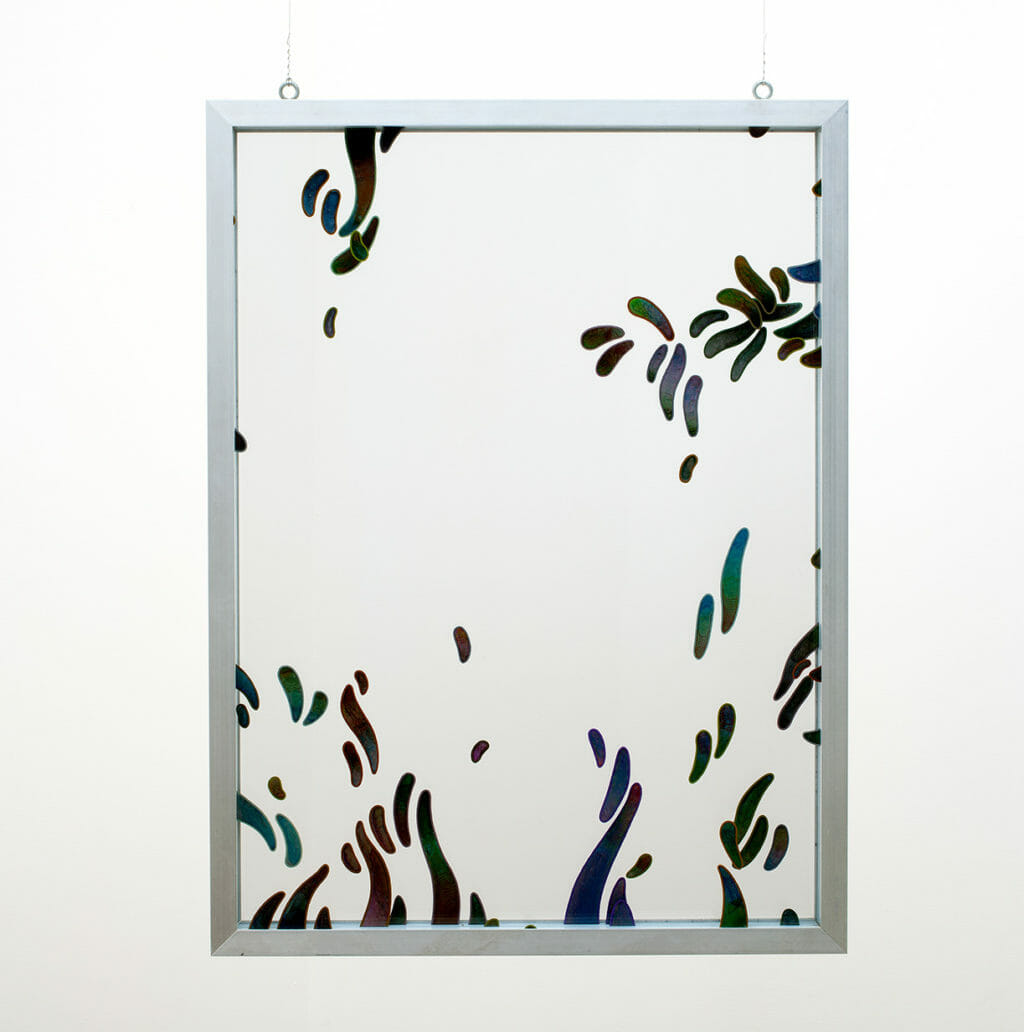Aluminum Floater #2
Ed Flood
1974
acrylic on Plexiglas with aluminum frame
29 3/4" x 21 3/4"
Ed Flood often incorporated delicate layers of Plexiglas painted with acrylic into his carefully constructed art objects. Inspired by Joseph Cornell’s surreal, glass-fronted boxes at the Art Institute of Chicago, Flood was attentive to both the design and the physical assembly of his artwork. Upon Flood’s move to New York City in 1973, the Chicago-based artist H.C. Westermann, known for his masterful woodworking skills, became a mentor and pen pal; he and Flood exchanged favorite screws, bolts, and hardware in specially constructed boxes via the U.S. mail.
Flood’s move to New York City also coincided with his shift to abstraction. Still working with painted Plexiglas, his glossy beach scenes—replete with the palm trees and crashing waves from his Chicago Imagist days—were soon replaced with compositions of minimalist, amorphous shapes. In Aluminum Floater #2, a microscopic universe is presented to the viewer, as fluid amoebic forms appear to float between the stacked layers of glass. The aqueous bodies are elegantly painted in vibrant hues of blue, purple, and green, and the colors meld together like an oil slick on a puddle of water. The work is suspended from two hooks on top of the constructed aluminum frame and is hung a few inches away from the wall, enhancing its presentation as a kinetic view into the universal and the microscopic.
Credit
The Bill McClain Collection of Chicago Imagism
